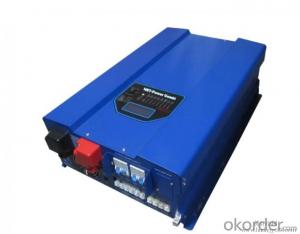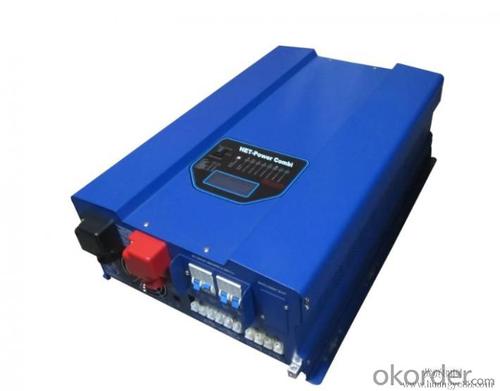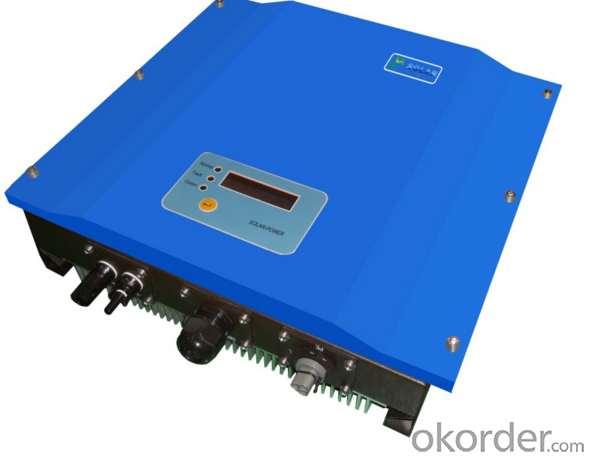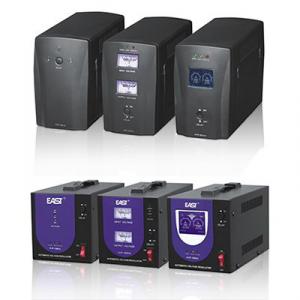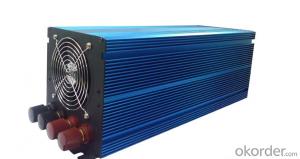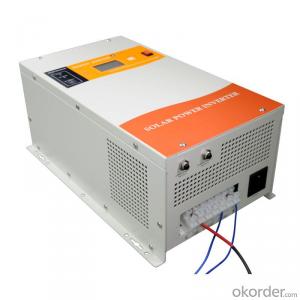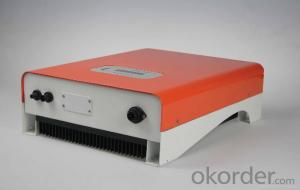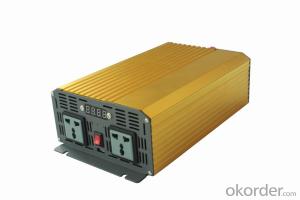Micro Inverter M600 Solar Inverter made in China
- Loading Port:
- Shanghai
- Payment Terms:
- TT OR LC
- Min Order Qty:
- 0 watt
- Supply Capability:
- 10000 watt/month
OKorder Service Pledge
OKorder Financial Service
You Might Also Like
Description of Micro Inverter Solar Inverter
Solar ac power system consists of solar panels, charge controllers, inverter and battery; Solar energy does not include inverter dc power system. Inverter is a kind of power conversion device, inverter by incentives can be divided into self-excited oscillation inverter and separately excited oscillation inverter.
Features of Micro Inverter Solar Inverter
Standard 10 years warranty, 5-15 years optional
High effiency (Max.96.7%)
AC/DC high frequency isolation technology
Maximum connection of 14 Micro-inverters
Adopted electric power carrier communication
Easy design,Plug-and-play chain installation
Remote monitor to each module
Reduce shading issues, improve the generating Reduce shading issues,improve the generating
integrated ENS function, complied with safety standard, can be connected to grid directly
Advantages of Micro Inverter Solar Inverter
Longer life cycle
Plug and play
Free monitoring through our webportal
Very lower internal temperature
Easy transportation and installation
Faster CPU speed
Adjustable active and reactive power
Real-time data readable at night
PID effect protect
Technical Data of Micro Inverter Solar Inverter
Type | Omniksol-M600 |
Input(DC) | |
Recommended PV Module Power | 2x(200-310)W |
Max,DC Voltage | 60V |
Operating Voltage Range | 16-60V |
MPPT Voltage Range at Nominal Power | 27-48V |
Max, Input Current | 10.0Ax2 |
Max, DC Short Cicuit Current | 14A |
Output(AC) | |
Nominal AC Power | 500W |
| Nominal AC Current | 2.17A(230V),2.08(240V),2.4A(208V) |
Nominal Grid Voltage | 230V/240V/208V |
Nominal Grid Frequency | 50Hz/60Hz |
Grid Voltage Range* | 230V/200-270V,240V/211-264V.208V/183-229V |
Grid Frequency Range* | 45.5-54.5Hz/57-62.5Hz |
Power Factor | >0.99 |
Total Harmonic Distortion(THD) | <3% |
Night time Power Consumption | <50mW |
Maximum Units Per Branch | 7 |
Efficiency | |
Max,Efficiency | 96.7% |
CEC Weighted Efficiency | 96.5% |
MPPT Efficiency | 99.5% |
Reference Standard | |
Safety Standard | EN 62109, AS/NZS 3100 |
EMC Standard | EN 6100-6-1, EN 6100-6-2, EN 6100-6-3 EN 6100-6-4, EN 6100-3-2, EN 6100-3-3 |
Grid Standard | VDE-AR-N4105. VDE-0126-1-1,G83/1,EN 50438,RD1699,CEI 0-21, AS4777,C10/C11 |
Physical Structure | |
Dimensions | 252x250x28mm |
Weight | 2.5kg |
Environmental Protection Rating | IP 67/NEMA 6 |
Cooling Concept | Natural convection |
Overvoltage Category | PVⅡ/Mains Ⅲ(According to IEC 62109-1) |
General Data | |
Operating Ambient Temperature Range | -40℃ to +65℃ |
Operating Internal Temperature Range | -40℃ to +85℃ |
Isolation Type | HF Transformerless |
Communication | Wire communication |
Standard Warranty | 15 Years (5-25 years optional) |
IMages of Micro Inverter Solar Inverter
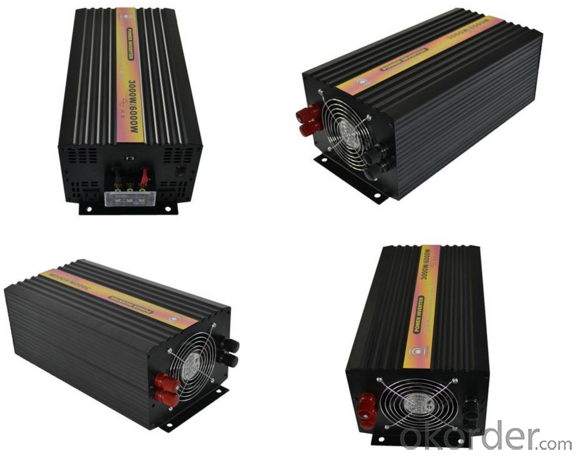
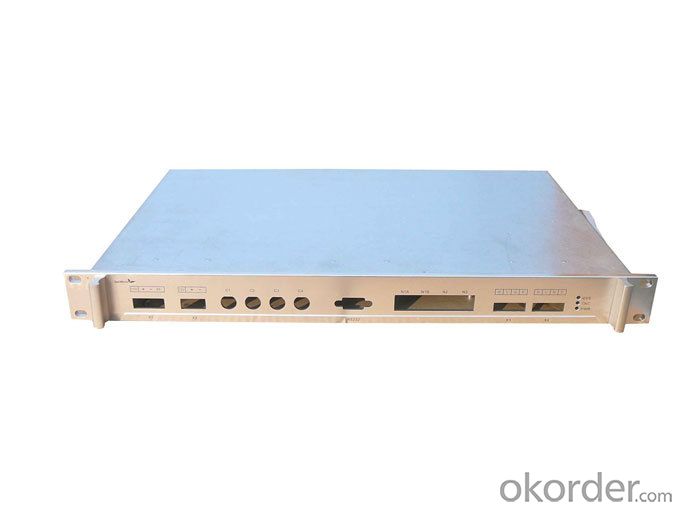

FAQ
Q: Do you have the CE, TUV, UL Certification?
A: We’ve already passed all the tests, and any certificate is available.
Q: Have you ever sold your products to companies in my country?
A: Of course, we have customers in all general PV markets, but I think we should expand our market share along with the market growth.
Q: When did your company set up? You are a new company, how can I believe your quality?
A: We entered into Solar PV industry in 2005, now we have several plants in manufacturing of a-Si and c-Si panels, and our capacity is 220MW per year. Till now we have already passed all the tests by authorized laboratories, e.g. TUV, CE, UL.
Q: Can you help us install the module if we cooperate with you?
A: We haven’t entered into installation sector, but we have the plan in near future.
Q: How do you pack your products?
A: We have rich experience on how to pack the panels to make sure the safety on shipment when it arrives at the destination.
Q: Can you do OEM for us?
A: Yes, we can.
Q: Can we visit your factory?
A: Surely, I will arrange the trip basing on your business schedule.
- Q: How do you connect a solar inverter to a data monitoring system?
- To connect a solar inverter to a data monitoring system, you need to follow a few steps. First, ensure that your inverter is compatible with the data monitoring system you intend to use. Then, connect the inverter to your local network using an Ethernet cable or wireless connection. Next, access the inverter's settings through a web interface or mobile app and enable data monitoring. Finally, input the necessary information, such as IP addresses or log-in credentials, into the data monitoring system to establish the connection between the inverter and the monitoring platform.
- Q: How does a solar inverter handle variations in temperature?
- A solar inverter manages variations in temperature by having built-in thermal management systems that ensure optimal functioning within a specified temperature range. These systems include heat sinks, fans, or liquid cooling to dissipate excess heat generated during operation. Additionally, advanced inverters incorporate temperature sensors and algorithms to monitor and adjust their performance accordingly, maintaining efficiency and protecting the internal components from overheating or freezing in extreme temperatures.
- Q: Can a solar inverter be used in regions with high levels of lightning activity?
- Yes, a solar inverter can be used in regions with high levels of lightning activity. However, it is important to ensure that the solar inverter is properly installed and equipped with surge protection devices to mitigate the risks associated with lightning strikes. Additionally, regular maintenance and inspections should be carried out to ensure the safety and functionality of the solar inverter in such regions.
- Q: How does a solar inverter convert DC to AC?
- A solar inverter converts direct current (DC) electricity generated by solar panels into alternating current (AC) electricity that can be used to power appliances and feed into the electrical grid. It does this by using a complex electronic circuit that first converts the DC power into high-frequency AC power. This high-frequency AC power is then transformed into the desired voltage and frequency of standard AC power using pulse-width modulation techniques. The converted AC power can then be utilized for various household or commercial electrical needs.
- Q: Can a solar inverter be used for three-phase power systems?
- Yes, a solar inverter can be used for three-phase power systems. Three-phase solar inverters are specifically designed to convert the DC power generated by solar panels into AC power for three-phase electrical systems. These inverters are capable of handling higher power loads and are commonly used in commercial and industrial settings where three-phase power is required.
- Q: How does a microinverter differ from a string inverter?
- A microinverter differs from a string inverter in that it is a small, individual inverter that is connected to each solar panel in a system, whereas a string inverter is a larger inverter that is connected to multiple panels in a series (string). This means that each panel with a microinverter can operate independently, optimizing the power output of each panel, while a string inverter operates based on the performance of the entire string of panels. Microinverters also allow for easier monitoring and maintenance as the performance of each panel can be individually tracked, whereas with a string inverter, any issues affecting one panel can impact the output of the entire string.
- Q: How is the output voltage and frequency of a solar inverter regulated?
- The output voltage and frequency of a solar inverter are regulated through a combination of control systems and power electronics. The control system continuously monitors the input from the solar panels and adjusts the inverter's operation accordingly. It analyzes the DC voltage generated by the panels and converts it to AC voltage at the desired frequency. This is achieved by controlling the switching of power electronic devices such as transistors or thyristors. These devices convert the DC power into high-frequency AC power, which is then transformed to the desired output voltage and frequency through a transformer or filter circuit. Overall, the regulation of the output voltage and frequency is achieved by the precise control of these power electronic components within the solar inverter.
- Q: Are solar inverters weather-resistant?
- Yes, solar inverters are designed to be weather-resistant. They are typically built with durable materials and sealed enclosures to protect them from various weather conditions such as rain, snow, and extreme temperatures. However, it is always recommended to consult the manufacturer's specifications and guidelines to ensure proper installation and maintenance for optimal performance and longevity.
- Q: Can a solar inverter be connected to a battery backup system?
- Yes, a solar inverter can be connected to a battery backup system. In fact, this connection is essential for storing excess solar energy generated during the day and using it during times when the sun is not shining, such as at night or during power outages. The battery backup system allows for uninterrupted power supply and greater energy independence.
- Q: What is the role of isolation in a solar inverter?
- The role of isolation in a solar inverter is to provide safety and protect the user from electrical shocks. It separates the input and output sides of the inverter, ensuring that any faults or disturbances on one side do not affect the other. Isolation also helps to minimize electrical noise and interference, improving the overall performance and reliability of the solar inverter.
Send your message to us
Micro Inverter M600 Solar Inverter made in China
- Loading Port:
- Shanghai
- Payment Terms:
- TT OR LC
- Min Order Qty:
- 0 watt
- Supply Capability:
- 10000 watt/month
OKorder Service Pledge
OKorder Financial Service
Similar products
Hot products
Hot Searches
Related keywords
